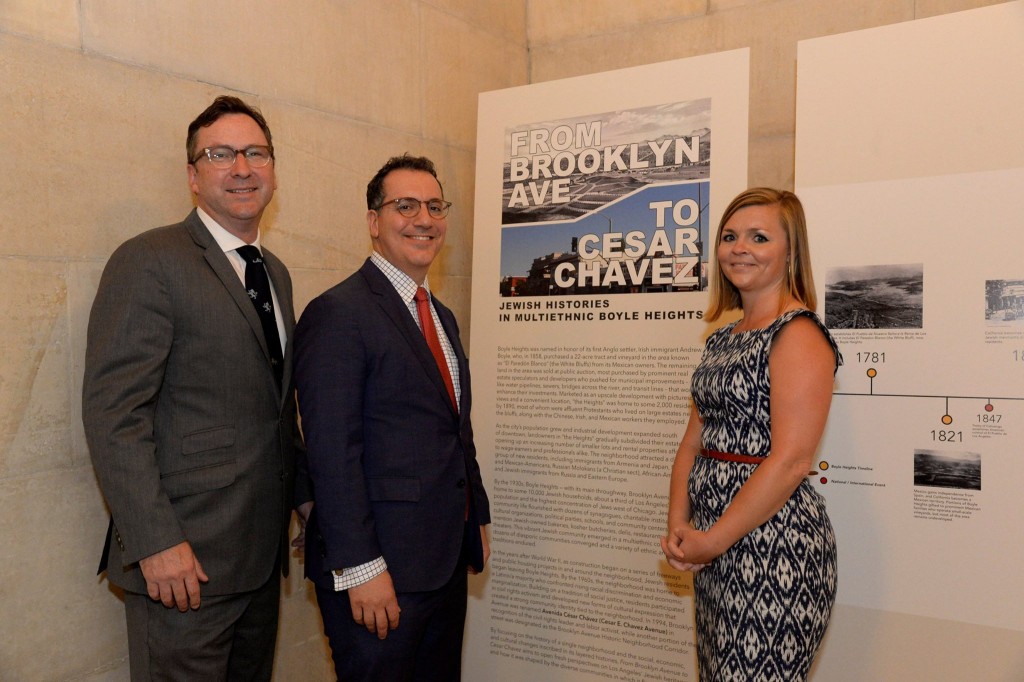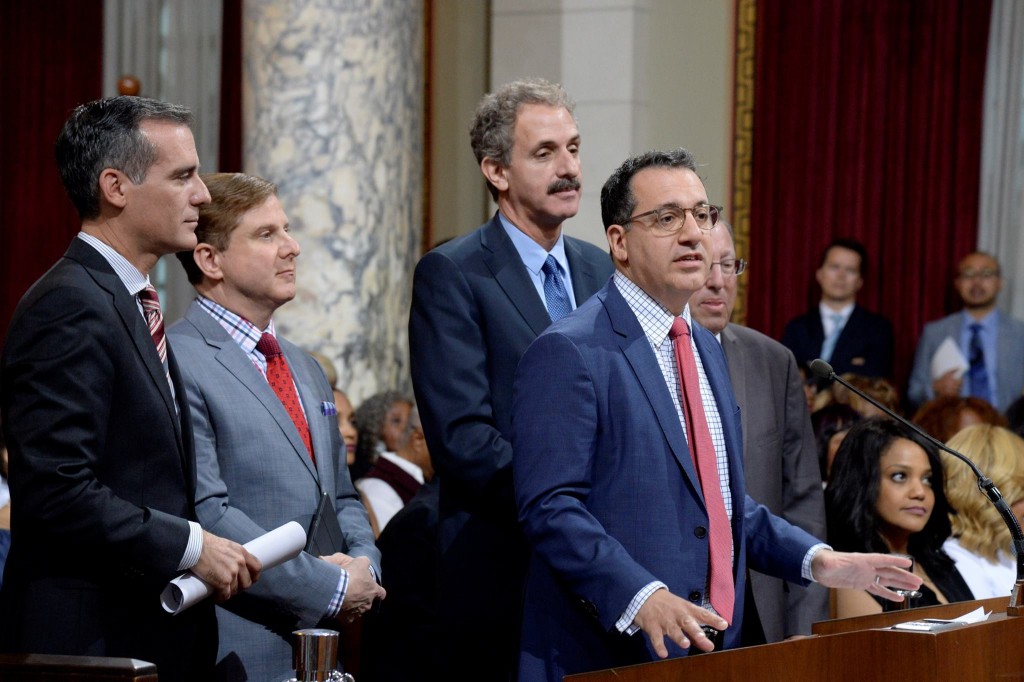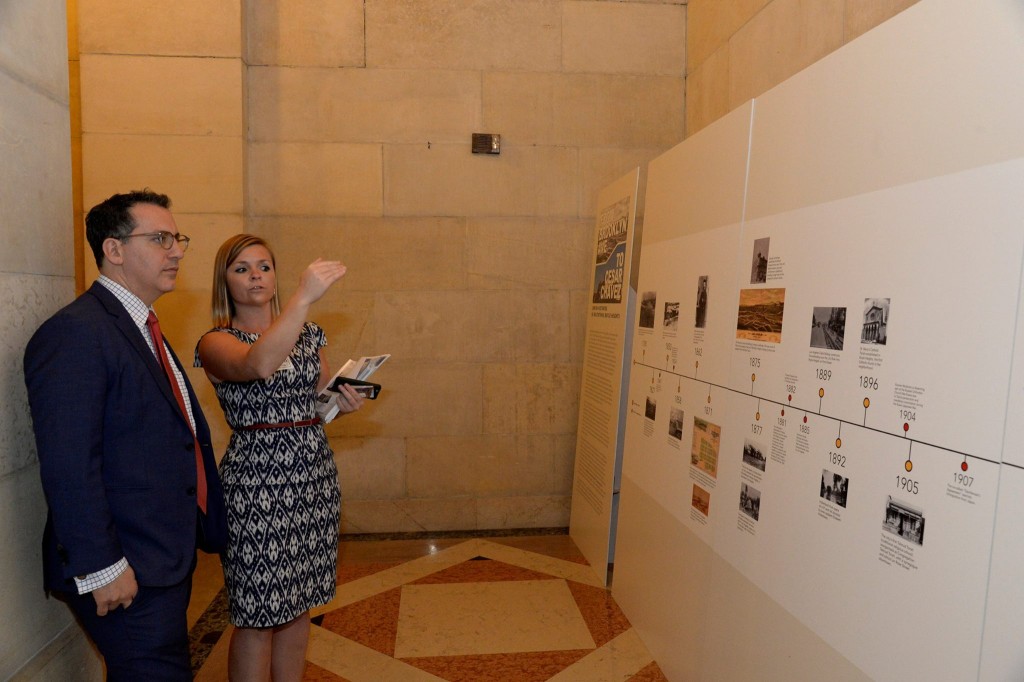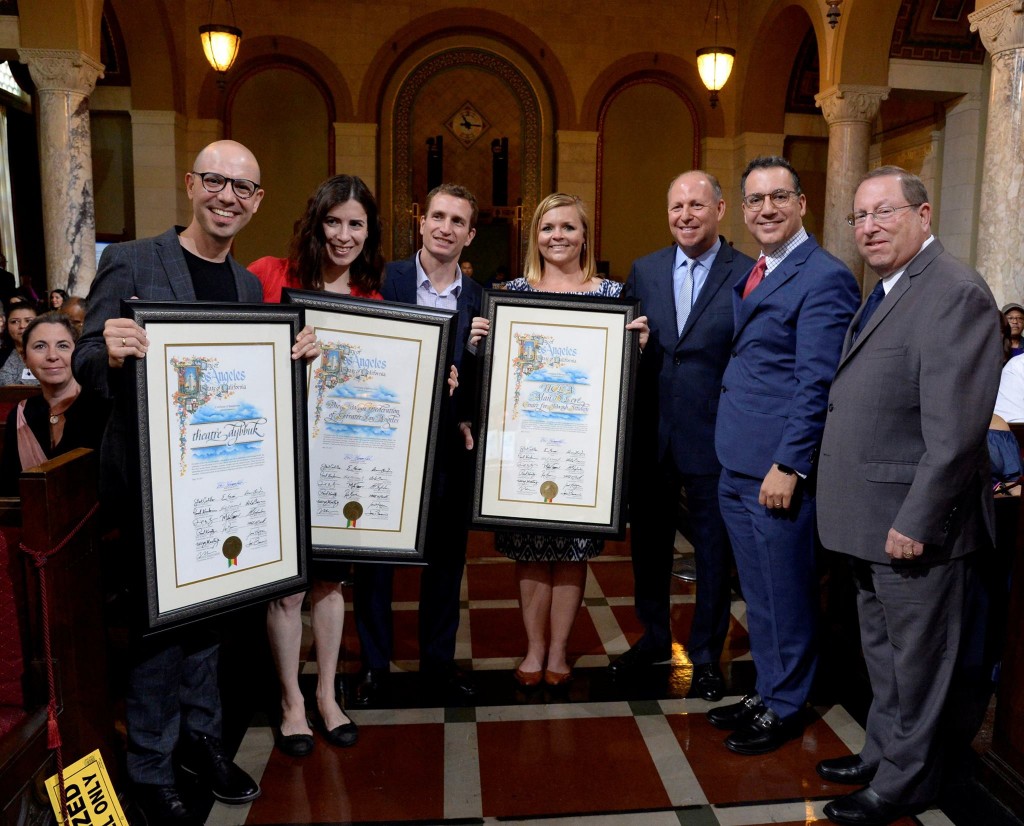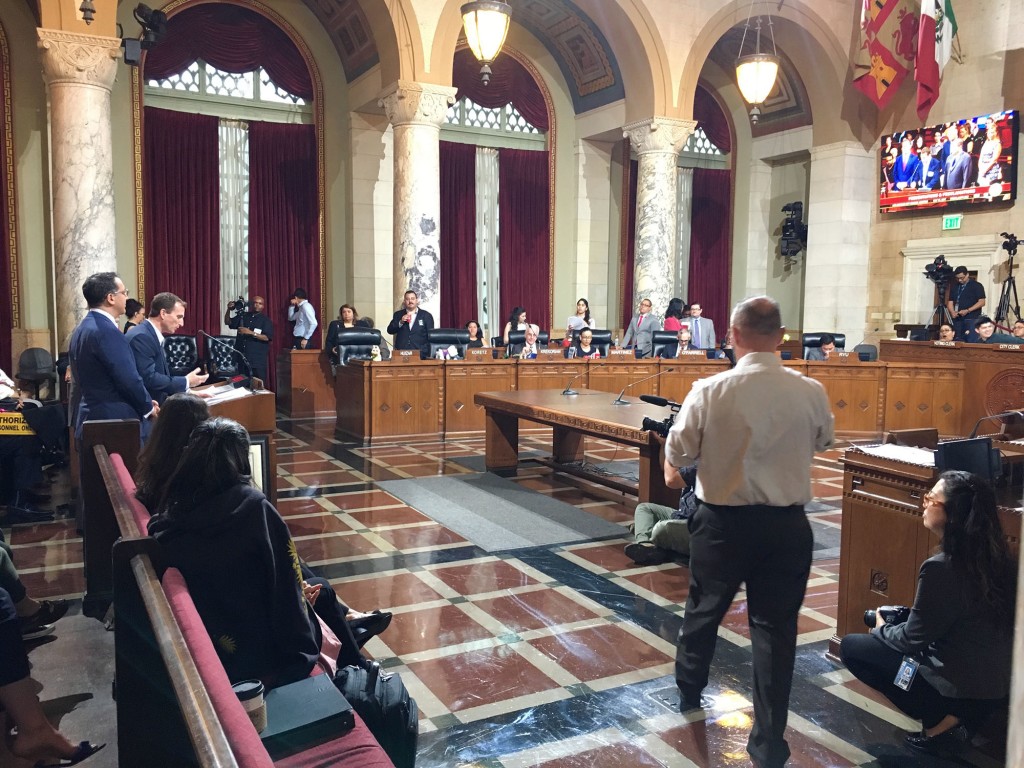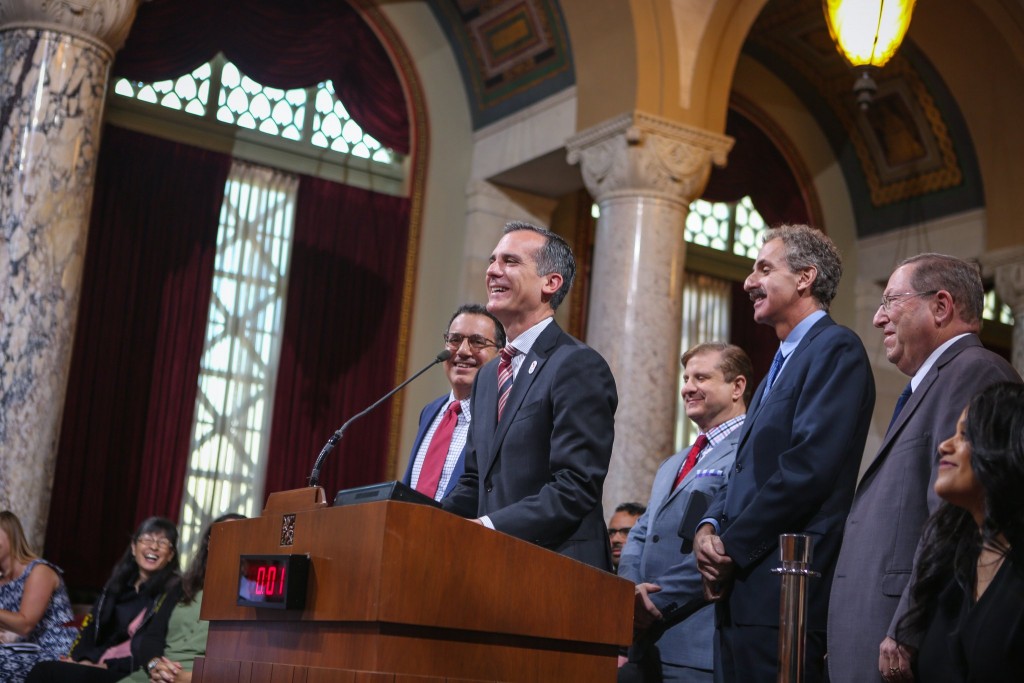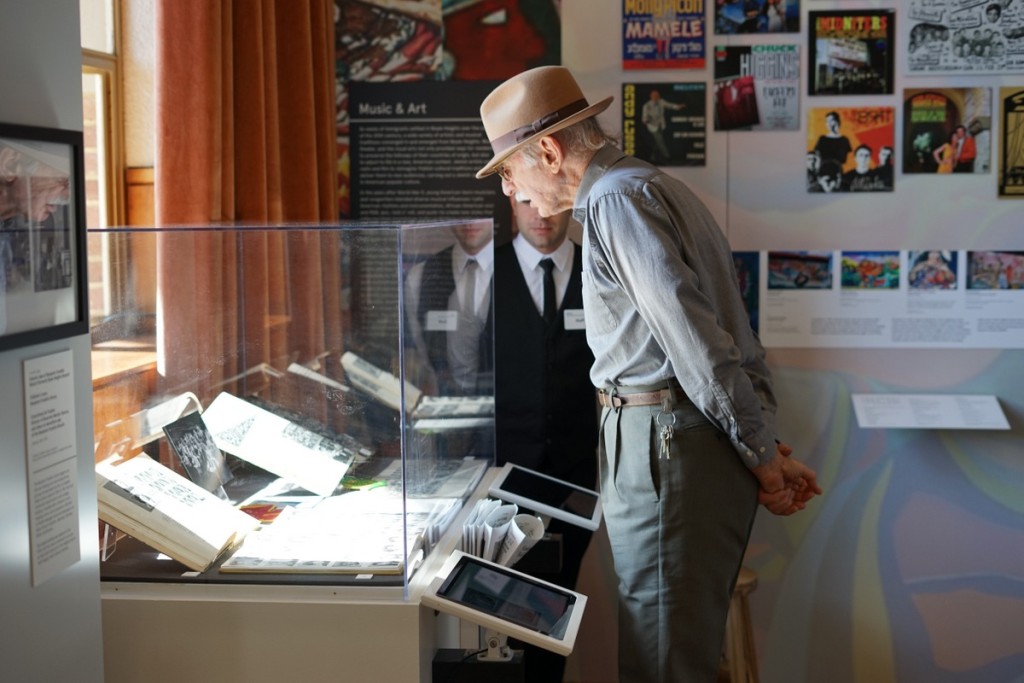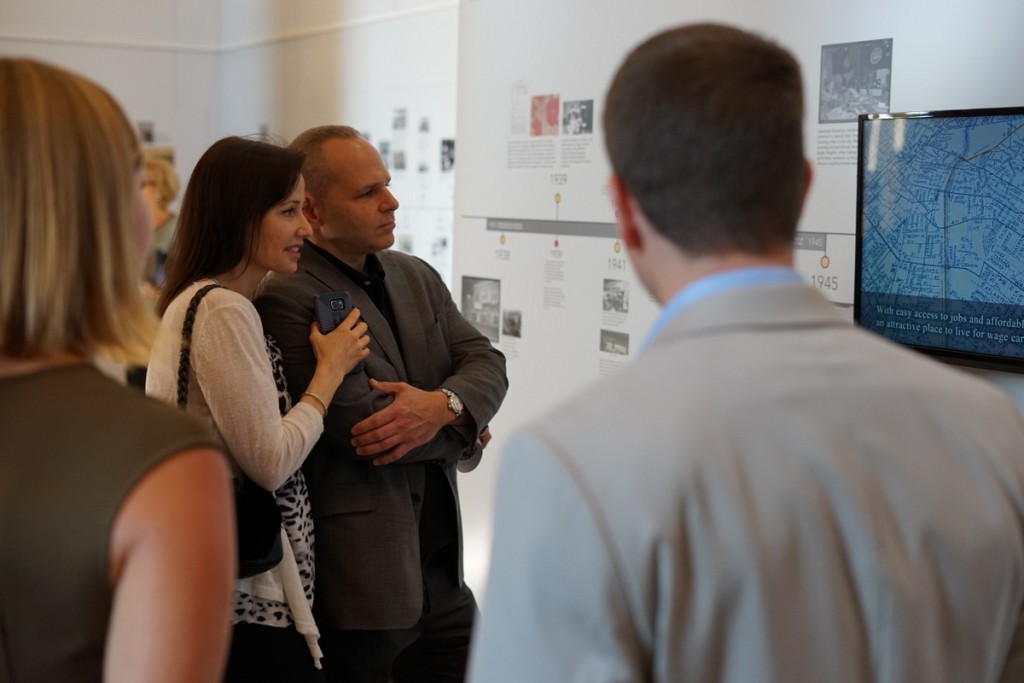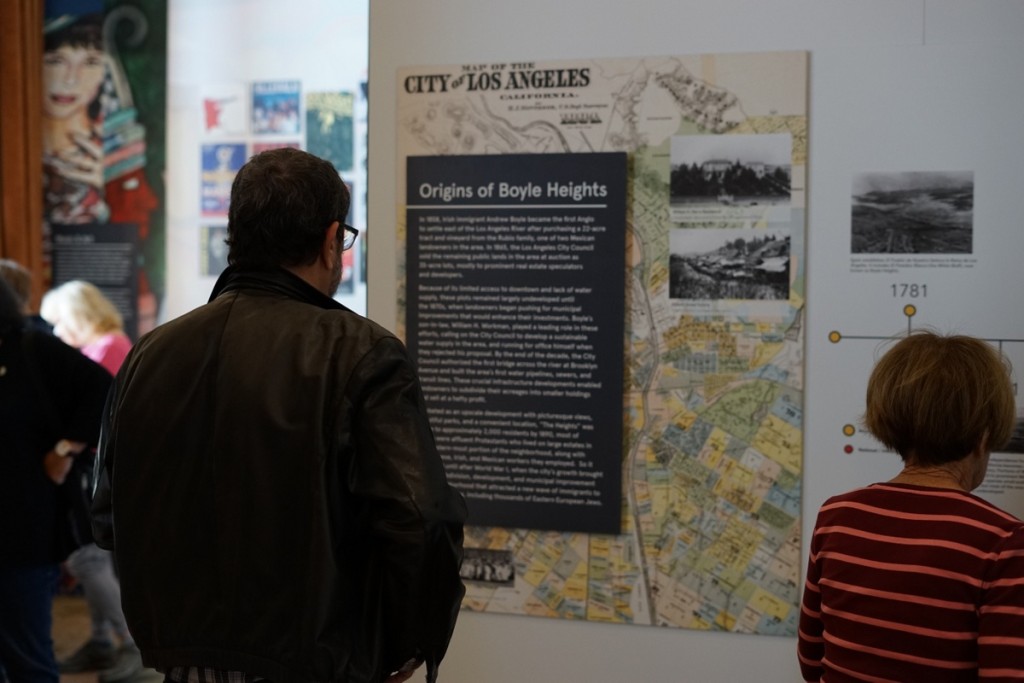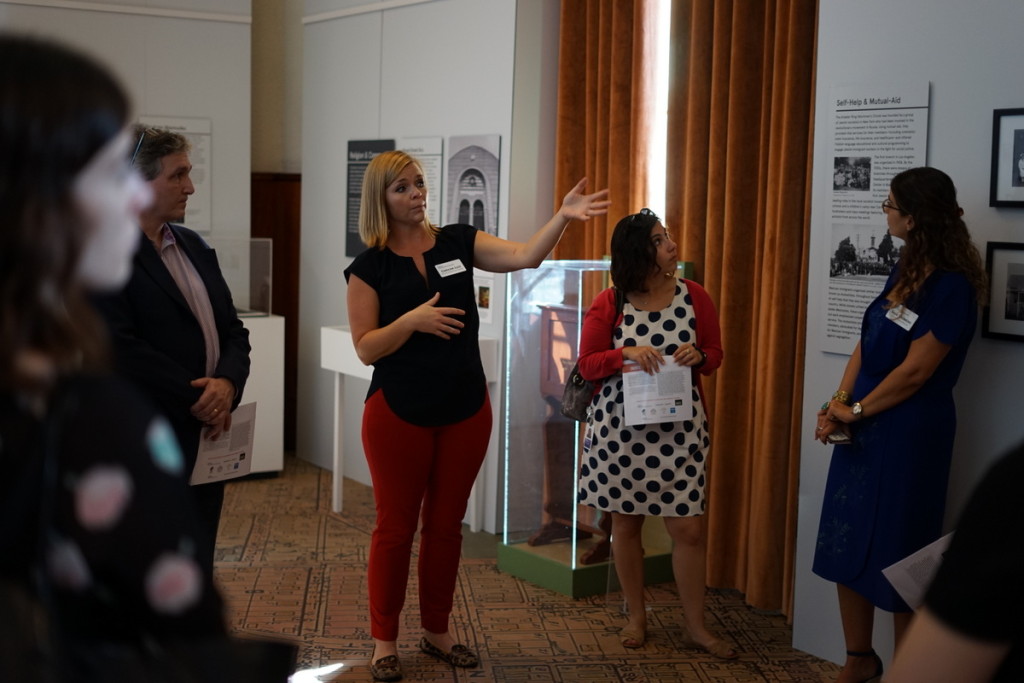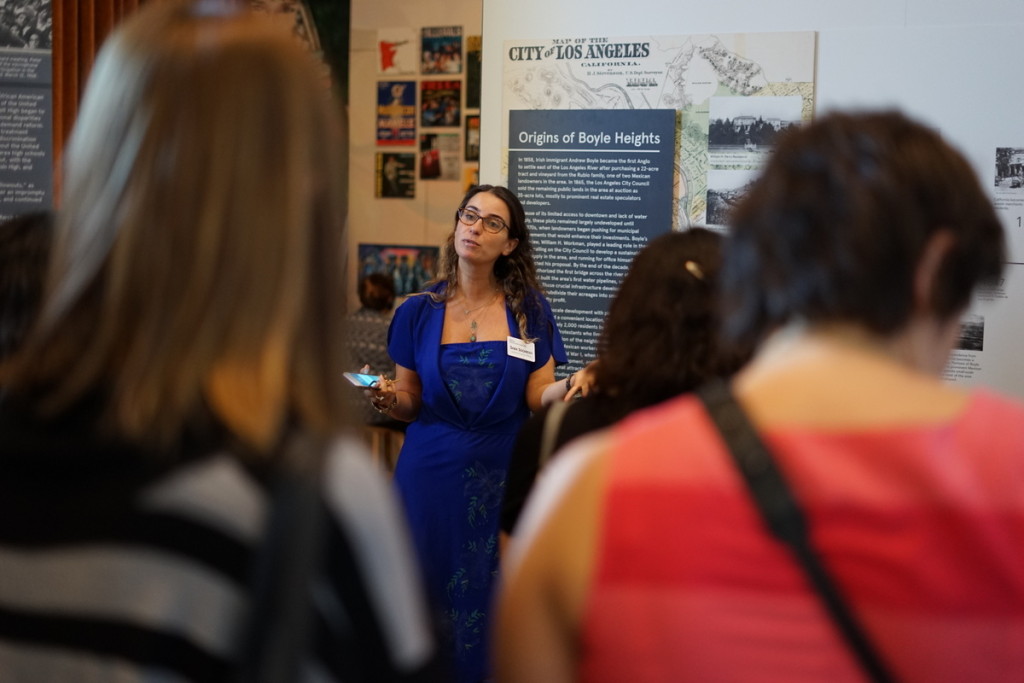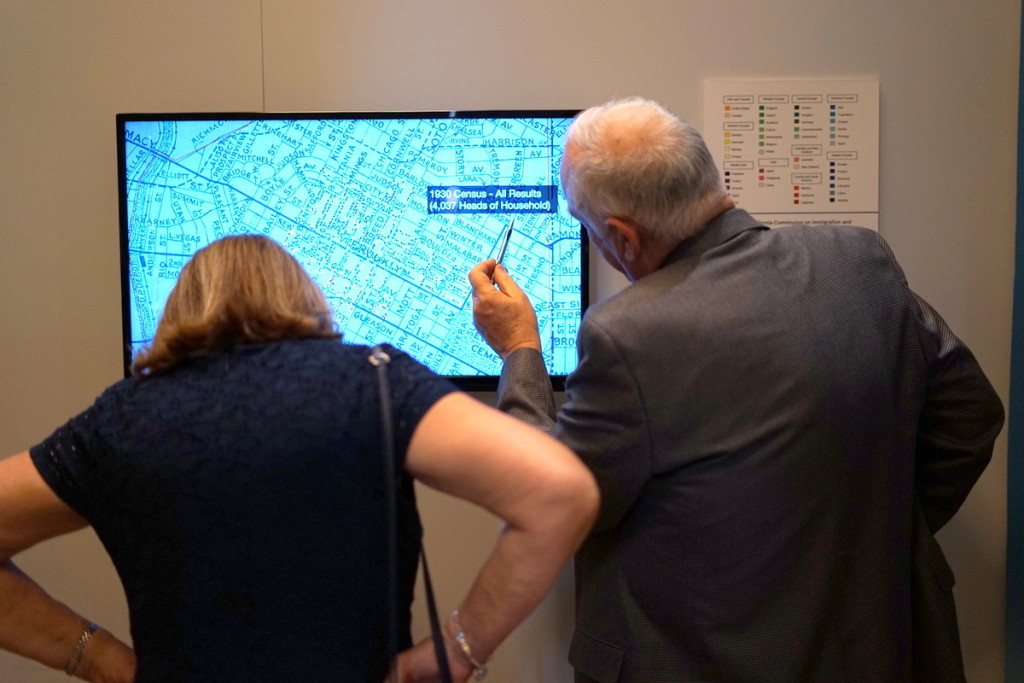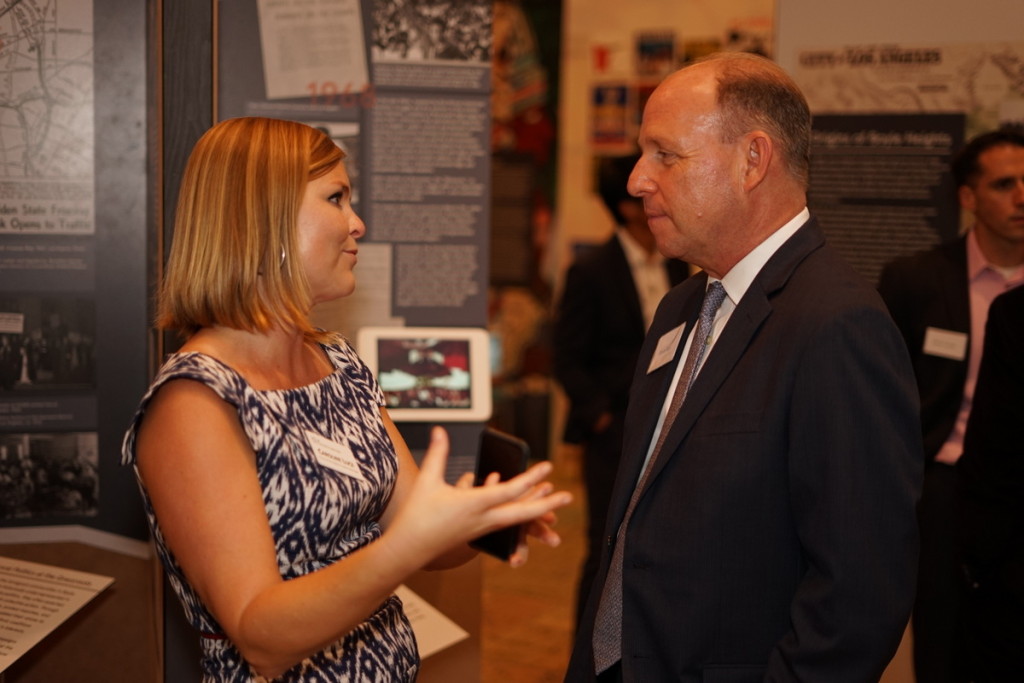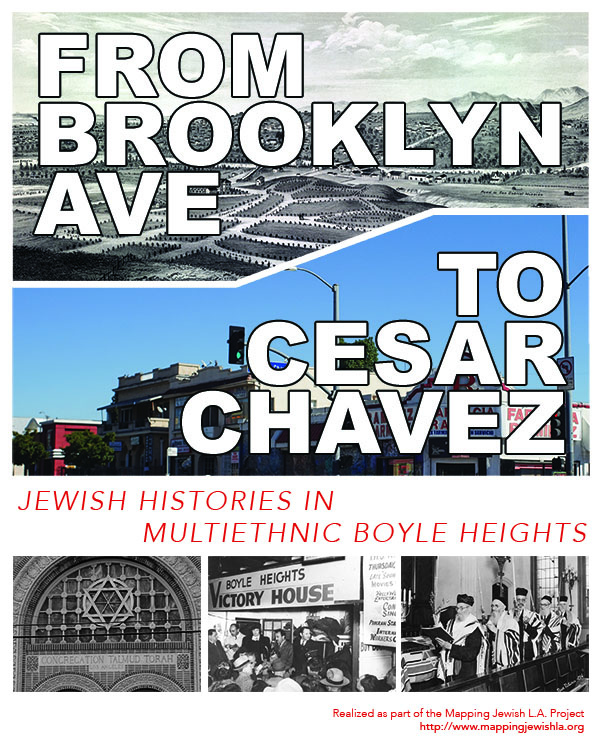
Featuring the Hinda and Jacob Schonfeld Boyle Heights Collection
Step back in time and space, to the era when Cesar Chavez Avenue was named Brooklyn Avenue, shopkeepers spoke Yiddish, and you could fish a pickle from the delicatessen’s barrel. The exhibition, “From Brooklyn Avenue to Cesar Chavez: Jewish Histories in Multiethnic Boyle Heights,” is largely devoted to the Jewish community from the 1920’s to the 1950s, when Boyle Heights was one of the most multiethnic and diverse neighborhoods in the country, with large concentrations of Mexican, Japanese, Armenian, Italian, Russian, and African-American residents.
The physical exhibition grew out of the UCLA Alan D. Leve Center for Jewish Studies’ Mapping Jewish Los Angeles initiative, a digital archive that tracks how Jews have shaped the landscape of Southern California and how the region has impacted the Jewish community. Created to celebrate the Leve Center’s formal renaming and dedication in 2016, the exhibit will soon embark on a regional tour. Contact cjs@humnet.ucla.edu to inquire about hosting it.
Brooklyn Avenue—the main street named in 1876 to entice new residents from the east to settle in Los Angeles’ Boyle Heights—is the focus of the exhibition which highlights both the diversity of Jewish experiences in Boyle Heights and the ways in which this immigrant neighborhood was the seedbed for all its residents to forge new American identities. Using digital technologies and archival materials, it emphasizes five themes— Language and Literature, Religion and Community, Music and Arts, Education and Youth, and Labor and Activism—to show how Jews and other residents participated in civic life, and constructed community.

In the 1930s, Boyle Heights was home to about a third of Los Angeles’ Jewish population—some 10,000 households—and the highest concentration of Jews west of Chicago. A vibrant Jewish community life flourished in a multiethnic context, with dozens of synagogues, charitable institutions, cultural organizations, schools, community centers, and Jewish-owned businesses, from bakeries to movie theaters.
The exhibition spotlights such key institutions as the Soto-Mission JCC, the Menorah Center, synagogues, the Jewish Home for the Aged, Mt. Sinai Hospital, and the Workman’s Circle, and such key events as the opening of Hollenbeck Park, real estate redlining, high school student protests, and the construction of streetcar lines and freeways.
The years after World War II, were a dynamic period of community activism and cultural expression in the neighborhood. Yet at the same time, Jewish residents began leaving for the suburbs en masse, giving rise to Boyle Heights’ new Latino/a majority. Brooklyn Avenue was renamed to honor Cesar Chavez in 1994, reflecting the area’s shifting demographics as well as its long history of community activism. Indeed, the neighborhood’s main street continues to embody the contest between the golden dreams of neighborhood residents, real estate developers, and government leaders that so influenced its layered past.
Los Angeles City Hall - Jewish Heritage Month, May 2017
Speakers:
Bob Blumenfield (Councilmember, 3rd district)
Eric Garcetti (Mayor)
Mike Feuer (City Attorney)
Ron Galperin (City Controller)
Paul Koretz (Councilmember, 5th district)
Mitchel Englander (Councilmember, 12th district)
David Ryu (Councilmember, 4th district)
Marqueece Harris-Dawson (Councilmember, 8th district)
Alisa Finsten (Director of Community Engagement, The Jewish Federation of Greater Los Angeles)
Todd Presner (Director, UCLA Alan D. Leve Center for Jewish Studies)
Caroline Luce (Research & Digital Projects Manager, Ross Postdoctoral Fellow, UCLA Alan D. Leve Center for Jewish Studies)
Steve Sass (Jewish Historical Society, Breed Street Shul Project)
